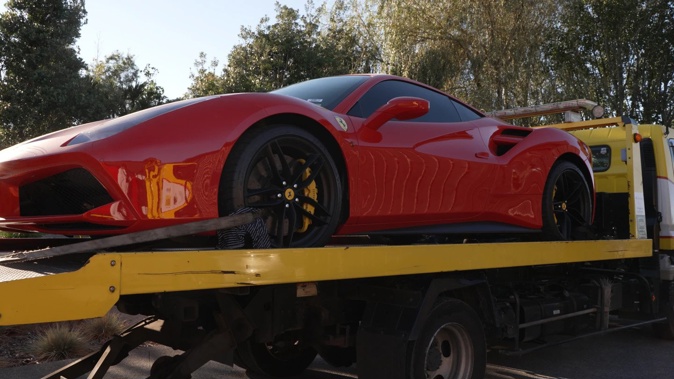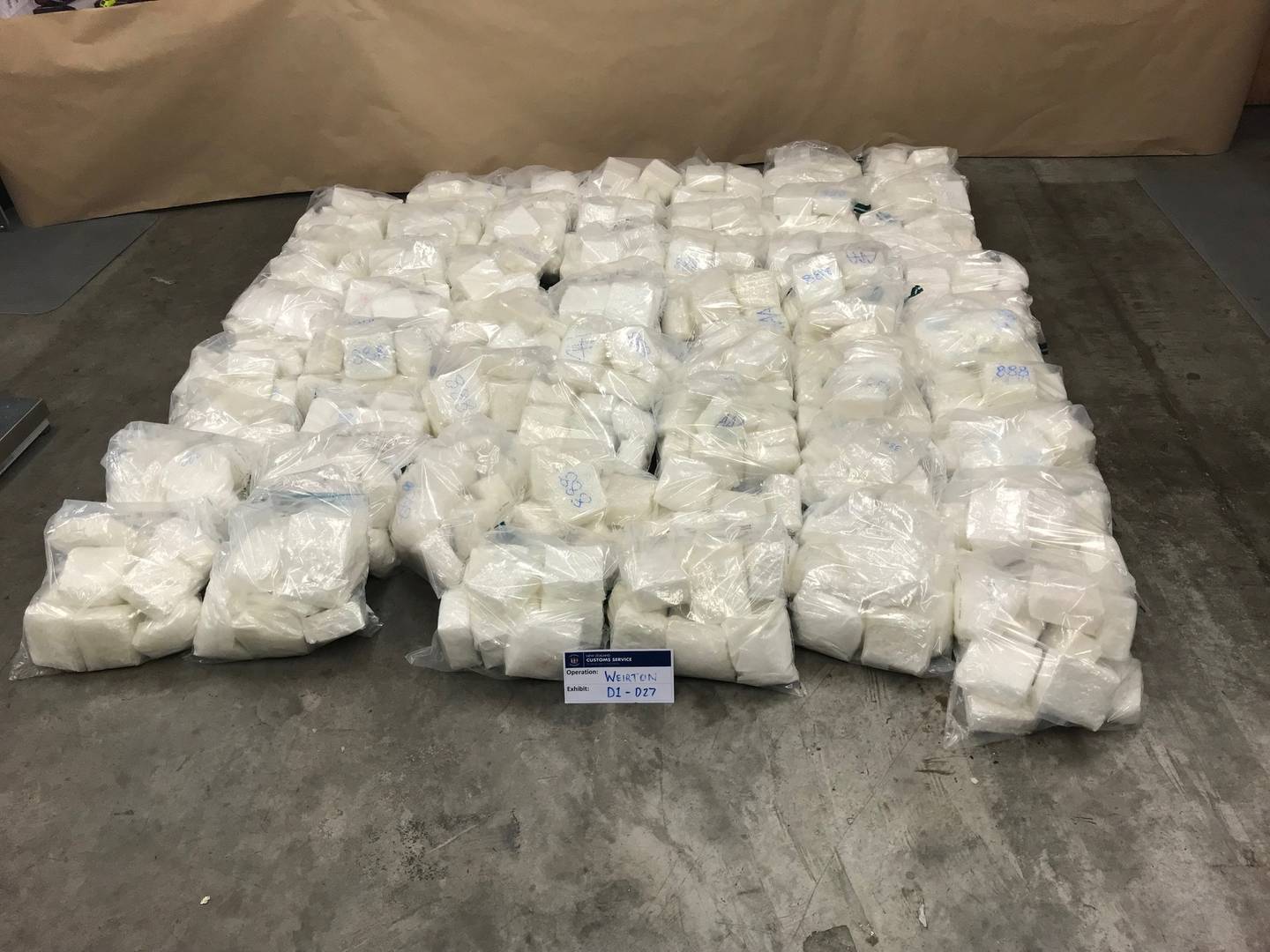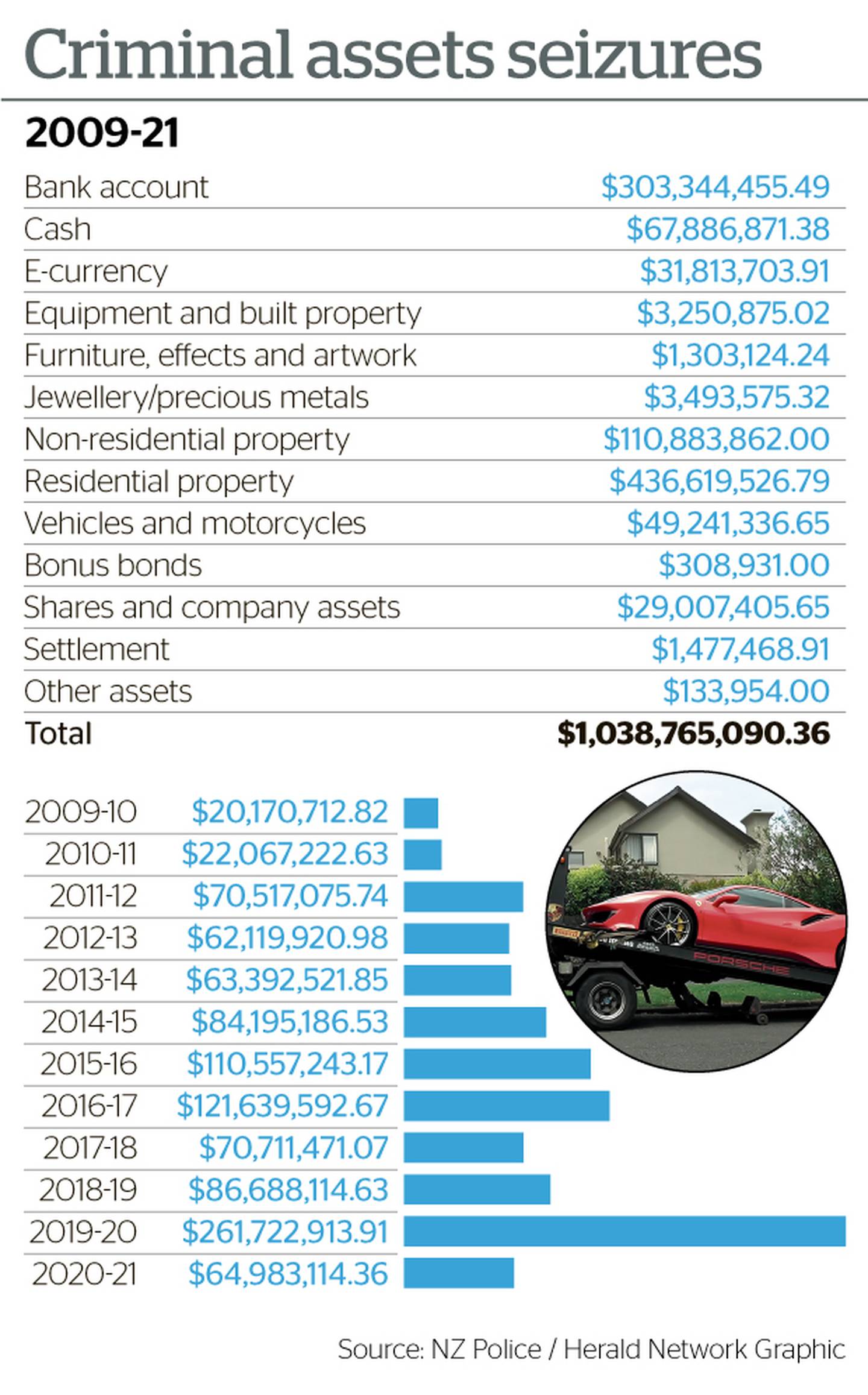
More than $7 million worth of assets have been seized from an Auckland gang member whom police allege helped the Comancheros to smuggle the largest ever shipment of methamphetamine into New Zealand.
Police this morning raided the multi-million home recently purchased by the 36-year-old and towed away late model Ferrari and Lamborghini vehicles, two Mercedes-Benz, and a Nissan Skyline worth $300,000.
Bank funds of around $1 million were also restrained, as were the four properties owned by the target of Operation Weirton in Auckland and a coastal settlement in the Bay of Plenty.
"This is a significant seizure of millions of dollars' worth of property, allegedly gained from the proceeds of crime," said Detective Inspector Lloyd Schmid.
"These criminal syndicates are motivated by financial greed and prey on those who are most vulnerable, with no regard for the destruction and social harm that methamphetamine causes in our communities.
The man, who has interim name suppression, is a patched member of the Mongrel Mob and has been charged with conspiracy to import methamphetamine after police and Customs intercepted 613kg of methamphetamine in late February.
Six others with links to the Comanchero motorcycle gang have been arrested including a senior patched member.
The Comancheros became established in New Zealand after senior members were deported under Australia's strict immigration rules, despite often living most of their lives there.
Although only a small fraction of the thousands of deportees, nicknamed "501s" in reference to the immigration law used to remove them from Australia, gangs such as the Comancheros and Mongols have had a disproportionate influence on the New Zealand criminal landscape.
Police investigations have shown that New Zealand-based Comancheros have strong global connections in the drug trade and the gang is behind the upswing of large meth shipments in recent years.
For many years, the most methamphetamine, also known as P or ice, discovered in one shipment was 96kg hidden in the bottom of green paint tins in Operation Major in 2006.
Now, 100kg or more is almost routine.

The Ferrari was owned by a member of the Mongrel Mob whom police allege helped import the biggest ever shipment of methamphetamine into New Zealand. Photo / Supplied
The 613kg intercepted in Operation Weirton broke the record of the previous largest meth shipment of 501kg smuggled into New Zealand from a "mothership" off the coast of 90 Mile Beach in Northland in 2016.
In 2019, there was another police investigation where 500kg was smuggled into Whakatāne and a Customs operation where 469kg was stopped at the border.
It's not just meth. A week after Operation Weirton stopped the 613kg of meth, a new benchmark was set for the biggest drug bust in New Zealand.
Customs and police intercepted 700kg of cocaine in the ship berthed in the Port of Tauranga, although it's likely the haul was destined for another country like Australia where cocaine is more popular.
These massive shipments of drugs are smuggled into the country by organised crime figures like one of the most senior Comancheros, Duax Ngakuru who is believed to be living in Turkey, who has connections with Asian syndicates and Mexican cartels.
Working with local criminals and gang members, these drugs flood into towns and neighbourhoods that are often ill-equipped to cope with the health and social impacts of widespread addiction.
Two decades after meth took hold here, wastewater data shows, New Zealand has failed to curb its devastating popularity.
An estimated 1 per cent of the population collectively spend more than $500 million a year on the drug, fuelling a lucrative criminal trade, causing extensive social harm and putting enormous strain on communities.

The 613kg of methamphetamine stopped in Operation Weirton is the biggest seizure of the drug in New Zealand history. Photo / Supplied
The $7m of assets restrained in the latest case cames as more than $1 billion worth of real estate, luxury cars and cash are among the assets restrained from drug dealers, gangs and other criminal groups since the Criminal Proceeds Recovery Act was passed in late 2009.
The success of the New Zealand police in enforcing the law was "impressive", according to a report published last year by the Financial Action Task Force (FATF), which estimated 8 per cent of criminal profits were frozen each year. The global average is around 2.2 per cent.
Now, the Government plans to change the law to give police even more powers to target gang leaders, or organised crime figures, who have distanced themselves from any criminal activity but allegedly still reap the financial benefits.
Under the current law, police do not need a conviction. They only have to show someone profited from criminal offending to the lower standard of proof applied in civil cases – "on the balance of probabilities" – rather than surpassing the more difficult "beyond reasonable doubt" threshold for criminal cases.
Under the proposed change to the law, the police would be able to ask the High Court to restrain - and later forfeit - the assets of anyone "associated" with an organised criminal group, if their declared income was insufficient to pay for the assets.
This is designed to target the leaders of gangs and organised criminal groups who the police allege have structured their affairs to "insulate" themselves from involvement, or even knowledge of, profit-driven crimes committed by their members.

Take your Radio, Podcasts and Music with you









